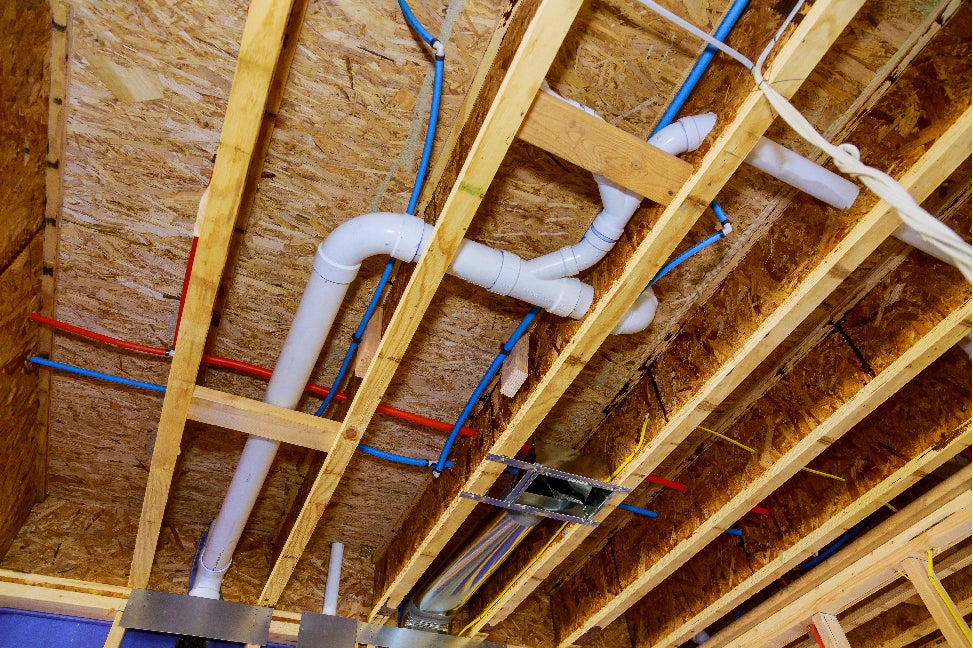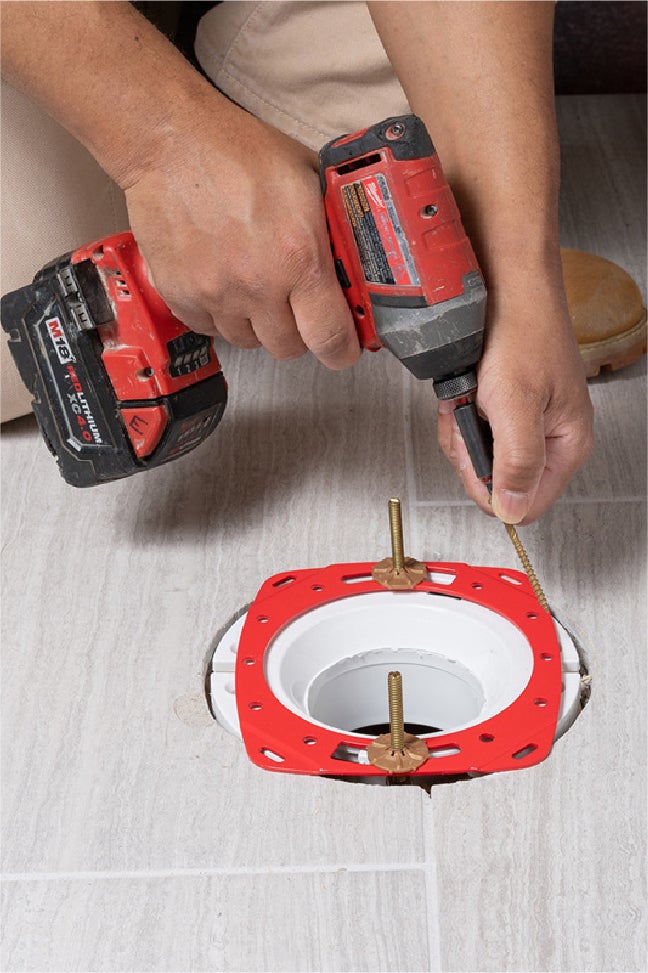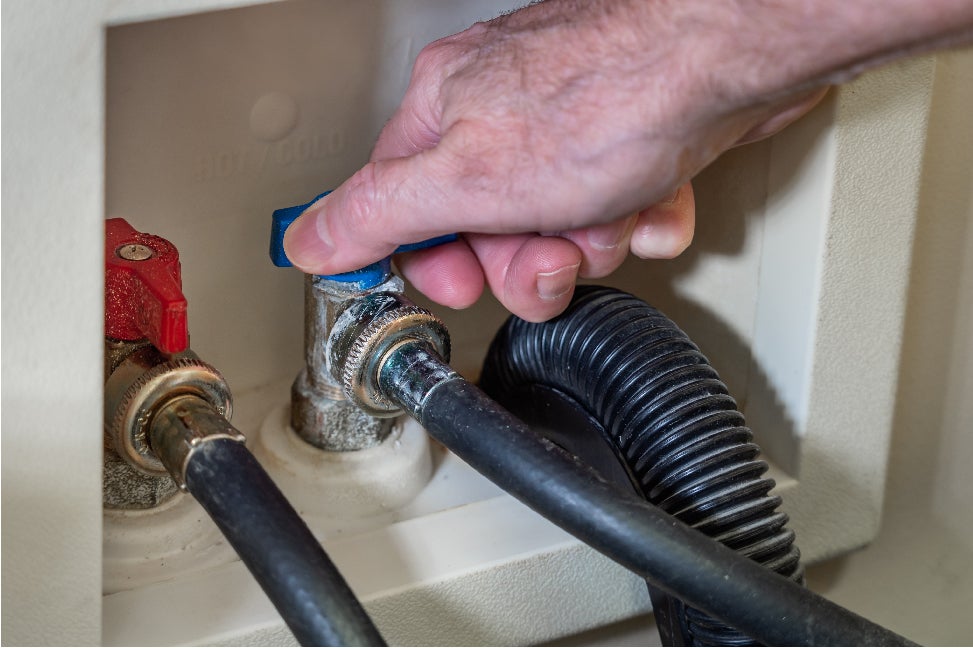It's the third time your toilet has begun leaking, so you may ask yourself: "Do I try to repair it again, or is it time for a replacement?"
Unless you just built your home or it's only a few years old, there's a chance that you'll have to make some updates to your plumbing pipes and fixtures.
Replacing a plumbing fixture can be costly, and most people would prefer to extend the life of their fixtures for as long as possible. Knowing what to look for when a fixture suddenly stops working will help you make an informed decision about whether you should repair a fixture or replace it entirely.
Let's break down common plumbing fixture issues you may encounter in your house and understand the signs of an easy do-it-yourself repair or a complete replacement done by a plumbing professional.
Note: Oatey recommends calling your local plumber first to assess and diagnose your situation before starting any major repairs.
1. Pipes
Pipes are tricky to monitor because they are behind the wall, and you might not see the problem until it's too late; i.e., a burst pipe has flooded a part of the house. However, there is a good chance you have some exposed pipes somewhere in your home. Examining these can offer insight into the condition of unseen, behind-the-wall pipes.

Over time, pipes will corrode, rust, and eventually break down. If you see these signs, call your plumber before a catastrophe strikes and causes more damage. If they cannot get there on time, there are ways to make temporary emergency repairs to leaky pipes.
You will want to check all pipes for discoloration, leaks, and water damage around the line's location. These are signs you will need to dig a little deeper and see if there is corrosion or if they are not sealed properly. If you identify any of these signs, you may not need a complete plumbing overhaul just yet; sometimes, all you need to do is re-tighten the connection. If there is significant leakage, it may be time to upgrade.
In other cases, if you are working on another project that requires opening up the wall, consider taking that opportunity to completely replace the pipes, especially if they are made of cast iron, galvanized, copper, or lead.
2. Toilet
The toilet is a fixture you don't think too much about until it starts acting up. Signs that it requires a repair are that it's flushing slowly, clogging, or leaking. In most cases, toilet repairs don't have to be complicated or costly. Most common issues have easy fixes.
An easy repair would be the flapper located inside the tank. When these become defective, they cause "silent leaks."
Another easy fix would be to repair a damaged toilet flange, a pipe fitting that both mounts a toilet to the floor and connects the closet bend to a drain pipe. If the toilet flange cracks and causes the toilet to become unstable and leak around the base and through the ceiling below, Oatey® Fix-it Flange Repair Ring is an easy solution. It does not require you to replace the toilet flange completely, and the universal design fits all flange and toilet installations. You can purchase an Oatey Fix-it Repair Ring at your local hardware store.

If there are any large cracks inside the bowl or tank, the whole toilet will need to be replaced. The water around the base would be an indication of a crack. Because the bowl bears a person's weight, we recommend not using it and replacing it as soon as possible to avoid serious injury and damage to the bathroom.
If it is a hairline crack, it can often be patched with a porcelain epoxy. Epoxy putty can adhere to just about any surface to plug leaks, fill in cracks, holes, and more. Like Oatey’s Fix-It Stick, most epoxy products are two-part epoxy.
3. Faucet (kitchen, shower, lavatory)
Leaky faucet? This is a frequent "fix me" sign that every homeowner faces. Whether in the kitchen, shower, or lavatory, there is a simple repair to make the dripping stop.
● Kitchen sink repairs usually require a change in the basket strainer or p-trap.
● With showers, in most cases, you'll need to change out of the inner seal of the head.
● For the lavatory, you will want to determine if the leak is coming from the hot or cold water valve. From there you will need to disassemble the handle and replace the cartridge.
If the repair becomes complicated and you uncover additional issues, we recommend getting a plumber involved for a complete replacement. In some cases, this can be a cheaper route.
4. Dishwasher
Repairing a dishwasher can seem like a daunting task. According to PartSelect customers, the good news is that 80% of dishwasher repairs are "easy" and take under 15 minutes to complete. Since dishwashers are not usually at the top of the list to fix, you have time to troubleshoot the problem and try solving it yourself before calling an appliance repair person.
Several warning signs indicate the dishwasher needs a quick repair:
● Water does not pump into or out of the dishwasher
● Dishes come out dirty or not hot
● Water is by the door.
Noticing these signs before they become major issues could be the difference between buying a new dishwasher or extending the life of your current one a few more years.
However, some parts of the dishwasher are not financially worth fixing. If the heating coil breaks, rust is present, the door doesn't latch properly, or there's a cracked drain, you will need to replace the dishwasher.
5. Washing Machine
Common issues homeowners have with their washing machines are:
● It stops spinning or draining.
● It won't power on.
● It leaks.
● It makes funny noises, or:
● The outlet box valves won’t turn.
Once you've pinpointed the issue, you'll need to decide if the repair would be cost-effective. The washing machine is another fixture that might be better replaced by a new machine than repaired, since a professional should handle the latter.
Oatey tip: To help prevent the outlet box valves from breaking, we recommend “exercising” them about twice a year. Just turn the valves on and off to keep the metal from getting stuck.

6. Water Heater
Warm water throughout the household is vital to everyday living, so there is a heavy reliance on the water heater to function properly. All water heaters have a limited lifespan. Here is your reminder to check up on yours.
You can help prolong its life with annual maintenance, but chances are you will need to replace it eventually. Some signs that it's time:
● You notice rusty water or pipes.
● You find corrosion/rust on the water heater’s base.
● It springs a leak present; or:
● The water isn't heating to the desired temperature at the outlet; e.g., the shower.
Water heaters don't last forever. If any of these signs signal that your water heater has failed, the problem should be handled immediately. You don’t want to run out.
It's important to keep plumbing pipes, appliances and fixtures in good condition, but we understand that things happen! If you are having trouble with any of these plumbing items, don't hesitate to call a professional instead of attempting a DIY repair that could cause further damage.